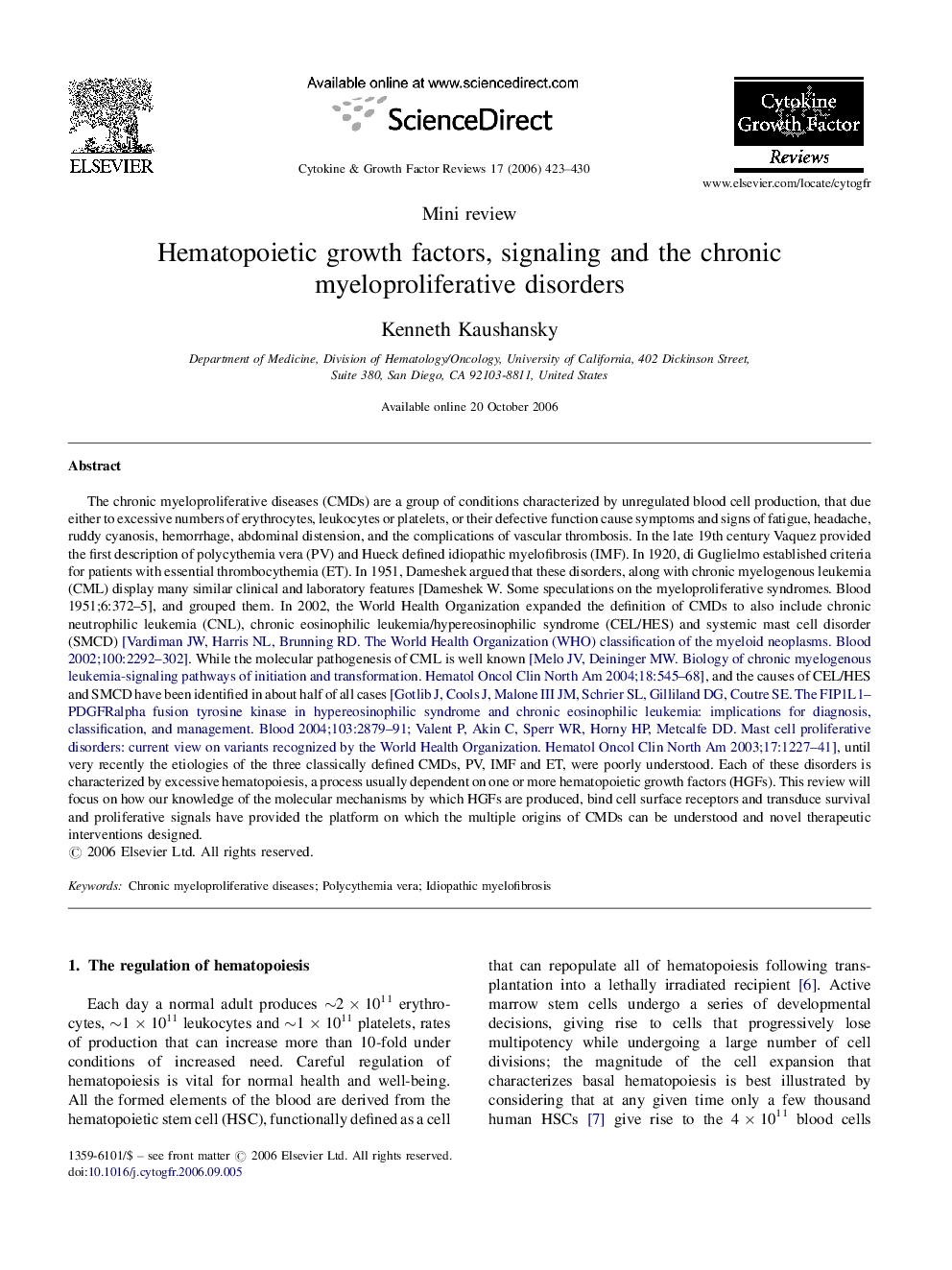| کد مقاله | کد نشریه | سال انتشار | مقاله انگلیسی | نسخه تمام متن |
|---|---|---|---|---|
| 2170927 | 1093422 | 2006 | 8 صفحه PDF | دانلود رایگان |

The chronic myeloproliferative diseases (CMDs) are a group of conditions characterized by unregulated blood cell production, that due either to excessive numbers of erythrocytes, leukocytes or platelets, or their defective function cause symptoms and signs of fatigue, headache, ruddy cyanosis, hemorrhage, abdominal distension, and the complications of vascular thrombosis. In the late 19th century Vaquez provided the first description of polycythemia vera (PV) and Hueck defined idiopathic myelofibrosis (IMF). In 1920, di Guglielmo established criteria for patients with essential thrombocythemia (ET). In 1951, Dameshek argued that these disorders, along with chronic myelogenous leukemia (CML) display many similar clinical and laboratory features [Dameshek W. Some speculations on the myeloproliferative syndromes. Blood 1951;6:372–5], and grouped them. In 2002, the World Health Organization expanded the definition of CMDs to also include chronic neutrophilic leukemia (CNL), chronic eosinophilic leukemia/hypereosinophilic syndrome (CEL/HES) and systemic mast cell disorder (SMCD) [Vardiman JW, Harris NL, Brunning RD. The World Health Organization (WHO) classification of the myeloid neoplasms. Blood 2002;100:2292–302]. While the molecular pathogenesis of CML is well known [Melo JV, Deininger MW. Biology of chronic myelogenous leukemia-signaling pathways of initiation and transformation. Hematol Oncol Clin North Am 2004;18:545–68], and the causes of CEL/HES and SMCD have been identified in about half of all cases [4] and [5], until very recently the etiologies of the three classically defined CMDs, PV, IMF and ET, were poorly understood. Each of these disorders is characterized by excessive hematopoiesis, a process usually dependent on one or more hematopoietic growth factors (HGFs). This review will focus on how our knowledge of the molecular mechanisms by which HGFs are produced, bind cell surface receptors and transduce survival and proliferative signals have provided the platform on which the multiple origins of CMDs can be understood and novel therapeutic interventions designed.
Journal: Cytokine & Growth Factor Reviews - Volume 17, Issue 6, December 2006, Pages 423–430